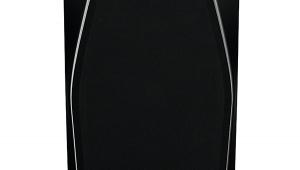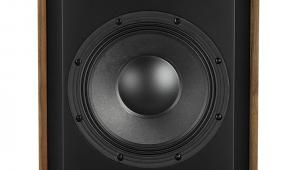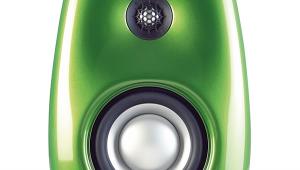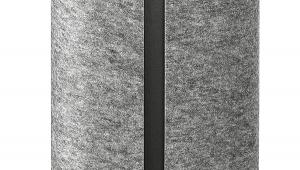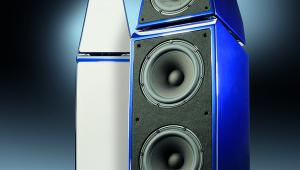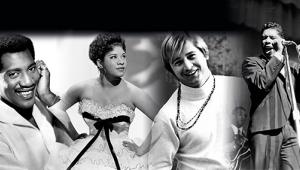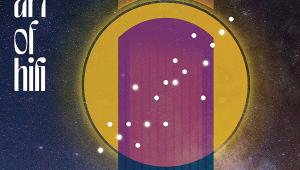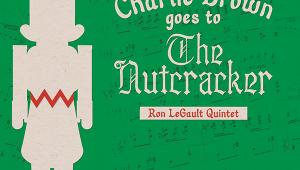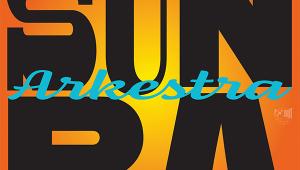MBL Radialstrahler 101 E MkII Loudspeaker Page 2
![]() Sound All Around
Sound All Around
Space, and the amplification to fill your space, is everything with these astonishing loudspeakers. Placed some 1.5m from the side and rear walls of the HFN room, with limited damping behind and plain walls to the left and right, yielded benign primary reflections (this is subjectively acceptable provided the spectral content of the direct and delayed sounds is sufficiently similar). Neither was I short of power with the resident Constellation Inspiration Monos [HFN Oct '19] joined in the room by Classé's Delta Monos.
But I'll cut to the chase: not only are the Radialstrahlers a strange sight to behold (40 years in front of more conventional moving-coil boxes rather sets the scene) but they also reveal the musical event, well, differently. There is certainly a 'sound' here, not only with respect to tonal colour but also in the speaker's ability to drive the room and create a truly huge but meticulously crafted soundscape.
Whether you park yourself in a typical hot seat position or off to the left or right, the 101 E MkIIs are not physically evident in the aural landscape – close your eyes and as those alien shapes disappear, so does any clue to the origin of the sound.
Smooth Integration
Furthermore while the freedom from 'cabinet' is very refreshing, so is Jürgen's very careful voicing of the transition between the bass melon and bandpass subwoofer. He has almost eliminated any trace of the 'two speakers in one' effect heard with some panel/electrostatic designs married to moving-coil subs but, by way of trade-off, there's not quite the low bass wallop or 'snap' you might expect from a speaker with a sub-30Hz extension. The Linkwitz-Riley crossover doubtless has a positive impact on the audible coherence of this speaker's sound, top to bottom, but it cannot assist with the inertia of the alloy sub-bass cone or, indeed, quite recover that suggestion of lost 'air' and extreme top-end transparency.

Turning my attention to a tried-and-tested bass torture track – Massive Attack's 'Unfinished...' [Blue Lines, 2012 Remix, Virgin; 96kHz/24-bit] – the 101 E MkIIs revealed those sampled layers with the same clarity as the haunting overtones of the vocals. The scene was suitably dark, the tenor absorbingly melancholic and I was perfectly happy to trade the immersive 'all of a piece' acoustic for some loss of low bass kick and extreme treble bite.
Melancholic for entirely different reasons, the superlative title track from Amy Winehouse's Back To Black [Universal Records 00600753450628; 96kHz/24-bit rip from Blu-ray audio] found the singer pouring her heart out, nay excoriating, in a way never quite emulated by all those that followed in the last 15 years of the 'British Soul' movement. Emotion, and especially heartfelt vocal emotion, is something these Radialstrahlers convey with particular sensitivity. They have a way of expressing music rather than simply projecting sound. Like I say, these speakers are different...
Switching generations, we've probably all enjoyed the familiar strain of The Beach Boys' Pet Sounds [Universal UICY-40181] countless times before. But not like this. The Wrecking Crew's sparkling instrumentals set out their stall – professional, tight and with perfect timing – while the Boys' soulful harmonies, recorded and mixed some time later, proceeded through this superlative song cycle, constructed by producer Brian Wilson and his lyricist buddy Tony Asher, with seemingly renewed youthfulness. Interestingly, neither did it sound obviously 'mono' (Brian Wilson was deaf in one ear...).
Love And Dancing
Inspired by our Ken's observations on the artificiality of The Human League's 'Don't You Want Me?' I also sought out the largely instrumental version on the 21st Anniversary Edition of Dare – Love And Dancing [Virgin CDVX2192]. While this remaster, with more than a tweak to pitch and reverb, lacks some of the richness of the original, the orchestration of those synthesisers is all the more vivid, punchy and squeaky-clean. Which is just as it should be, except that through these novel Radialstrahlers it's possible to hear the low, mid and high patterns radiating as if from the individual 'melons'.
Along, perhaps, with Depeche Mode, The League blended pop with the electronica of Kraftwerk and Tangerine Dream to birth a more focused audio artform just before the advent of the 'New Wave'. MBL's speakers are the perfect canvas on which – through which – to enjoy this polyphonic masterclass.
Hi-Fi News Verdict
It was worth the wait. Nearly a decade after first seeing and hearing these loudspeakers in a less than ideal environment there was still that glimmer of magic in the air and the promise of so much more to come. I was not disappointed, and while the Radialstrahler 101 E MkIIs offer a musical soundscape that's as distinctive as their appearance is startling, to listen to them is never less than an experience.




